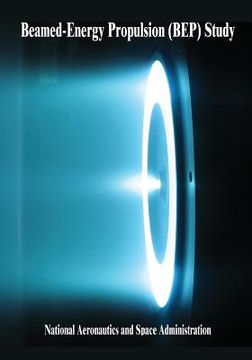Reseña del libro "Beamed-Energy Propulsion (BEP) Study (en Inglés)"
The official scope of this study was (1) to review and analyze the state-of-art in beamed-energy propulsion (BEP) by identifying potential game-changing applications, (2) to formulate a roadmap of technology development, and (3) to identify key near-term technology demonstrations to rapidly advance elements of BEP technology to Technology Readiness Level (TRL). The two major areas of interest were launching payloads and space propulsion. More generally, the study was requested and structured to address basic mission feasibility. The attraction of BEP is the potential for high specific impulse (Isp) while removing the power generation mass. The rapid advancements in high-energy beamed-power systems and optics over the past 20 years warranted a fresh look at the technology. BEP could help meet the known needs of NASA and/or the Department of Defense (DOD), providing low-cost, rapid access to space for operationally responsive military systems, scientific payloads, and the commercialization of space. For launching payloads, the study concluded that using BEP to propel vehicles into space is technically feasible if a commitment to develop new technologies and large investments can be made over long periods of time. Such a commitment would include specific technologies like multi-megawatt power lasers and microwave sources as well as building new launch facility infrastructure. The costs of the infrastructure are high. From a commercial competitive standpoint, if an advantage of beamed energy for Earth-to-orbit (ETO) is to be found, it will rest with smaller, frequently launched payloads. For space propulsion, the study concluded that using beamed energy to propel vehicles from low Earth orbit to geosynchronous Earth orbit (LEO-GEO) and into deep space is definitely feasible and showed distinct advantages and greater potential over current propulsion technologies. However, this conclusion also assumes that upfront infrastructure investments and commitments to critical technologies will be made over long periods of time. BEP energy source requirements are much less than for the launch applications. Lower propulsion costs with shorter transit times for LEO-GEO servicing missions and faster science missions to the outer planets are the major benefits. The chief issue, similar to that for payloads, is high infrastructure costs. As can happen in detailed examinations of innovative approaches, the study uncovered two unanticipated areas that appear to have great potential and therefore are worthy of consideration for new investment, at least at the "detailed study" level. BEP could provide the key to combining propulsion, power, and communications systems for in-space applications, thus creating a new class of small spacecraft with minimal systems and reducing their complexity, cost, and mass. Beaming energy to a thermal optical plasma engine could provide a highly efficient technology for high-thrust and high-ISP space propulsion. The specifics of these concepts are provided in the main body of the report. Finally, the intention of this study was to work within the time and resources allotted to determine the feasibility of BEP. This involved achieving a single closed-design solution for each mission analyzed which is, in all probability, not the optimum solution. As such, proponents of the investigated concepts may not agree with the study's findings and final design solutions, citing that better performance could be achieved with additional design effort. The authors do not disagree with that perspective. Nonetheless, the study management team was satisfied that the results were sufficient to meet the primary objective, which was to prove or disprove the feasibility of the concept and missions. It is also noted that at this time all possible future demonstrations of beamed energy and power transfer will be pursued solely by NASA.

